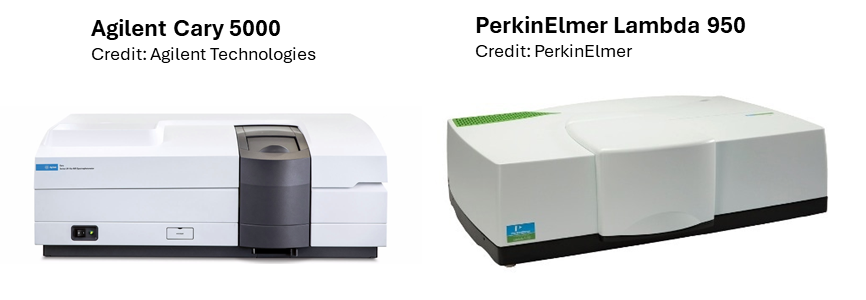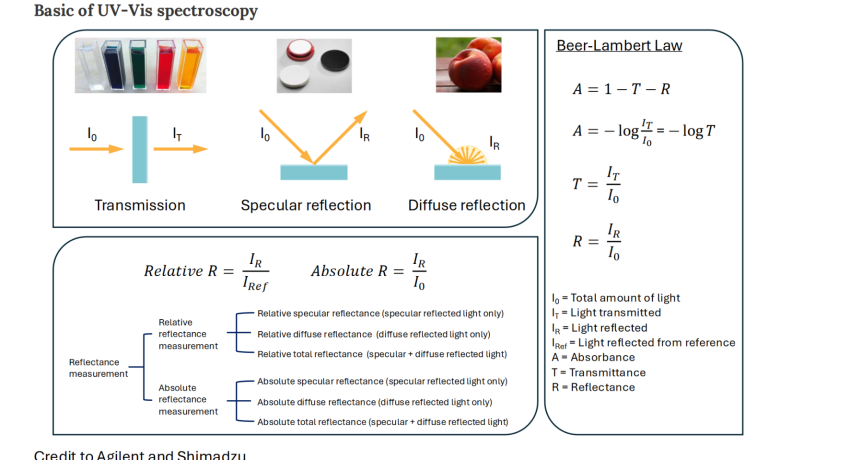Measurements in the ultraviolet/visible region (UV-VIS) cover wavelengths from about 200 nm to 800 nm. The absorption of ultraviolet or visible radiation by a molecule leads to transitions among the electronic energy levels of the molecule. It is ideal for characterizing the optical and electronic properties of various materials such as: films, powders, monolithic solids, and liquids. The near-IR region (NIR) of the electromagnetic spectrum utilizes wavelengths from about 800-2,500 nm. The transitions measured in this region are generally related to overtone and combination bands of mid-infrared vibrational modes.
The chart found in this highlight describes the basics of UV-Vis Spectroscopy. (Click it to enlarge the image).

- Solids, liquids, and powders can be measured with relative ease.
- Sample size can vary from 2 x 2 mm up to several cm.
- We can collect data in almost any modality: transmission, diffuse reflection, variable angle specular reflection, and variable angle transmission.
Agilent - Cary 5000 (180 - 3300nm) - PDF |
Location: MRI N-007 |
| Liquid UV-Vis |
|
| 150mm Sphere Accessories DRA-2500 - PDF |
|
| Universal Measurement Accessory (UMA) - PDF |
|
PerkinElmer - Lambda 950 (180 - 3300nm) |
Location: CBEB 217-A |
| Liquid UV-Vis |
|
| 150mm Sphere Accessories (Accessory L6020202) |
|
| Praying Mantis® Diffuse Reflectance - PDF |
|
| Universal Reflection Accessory (Accessory L6020202) |
|

